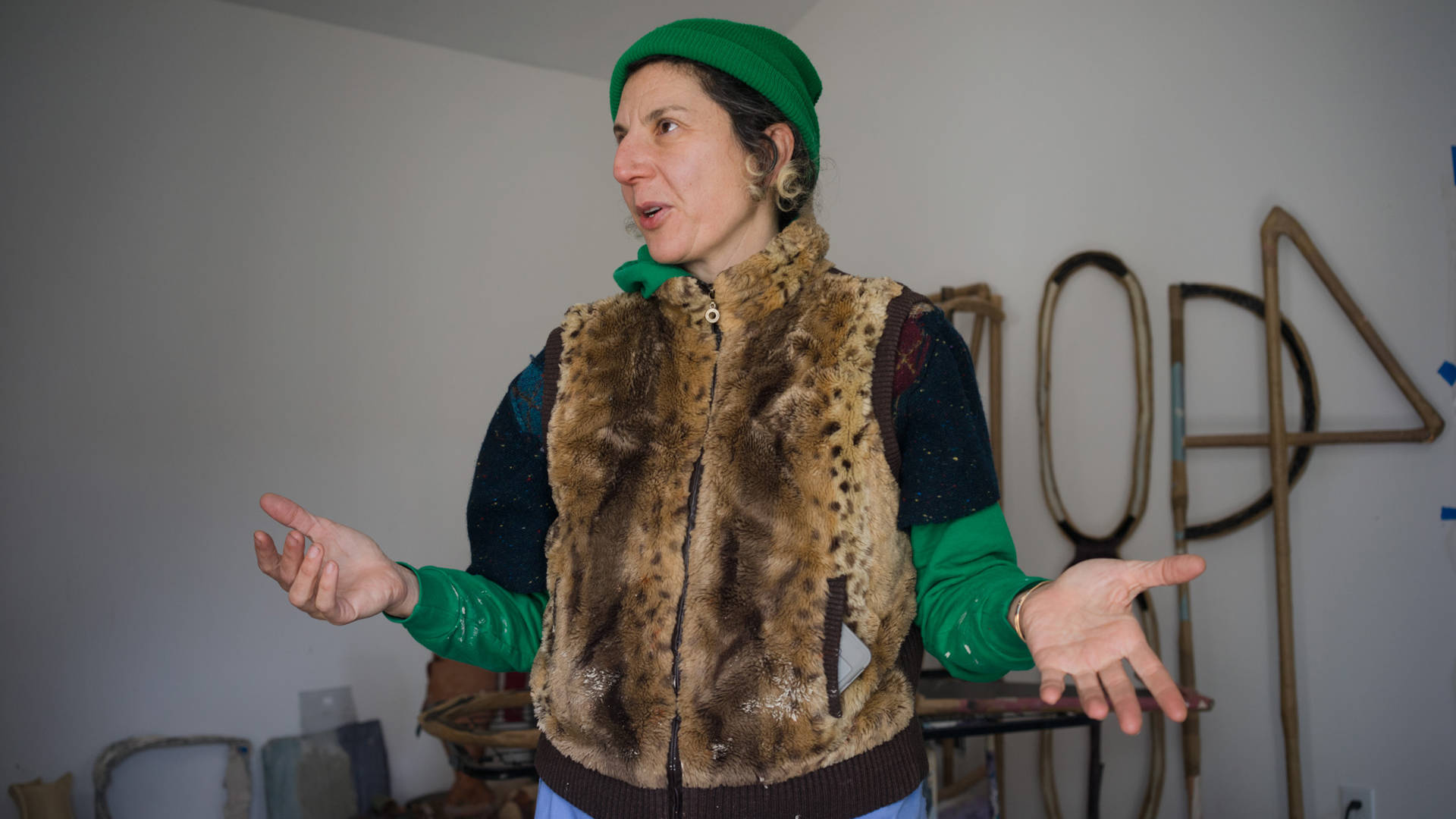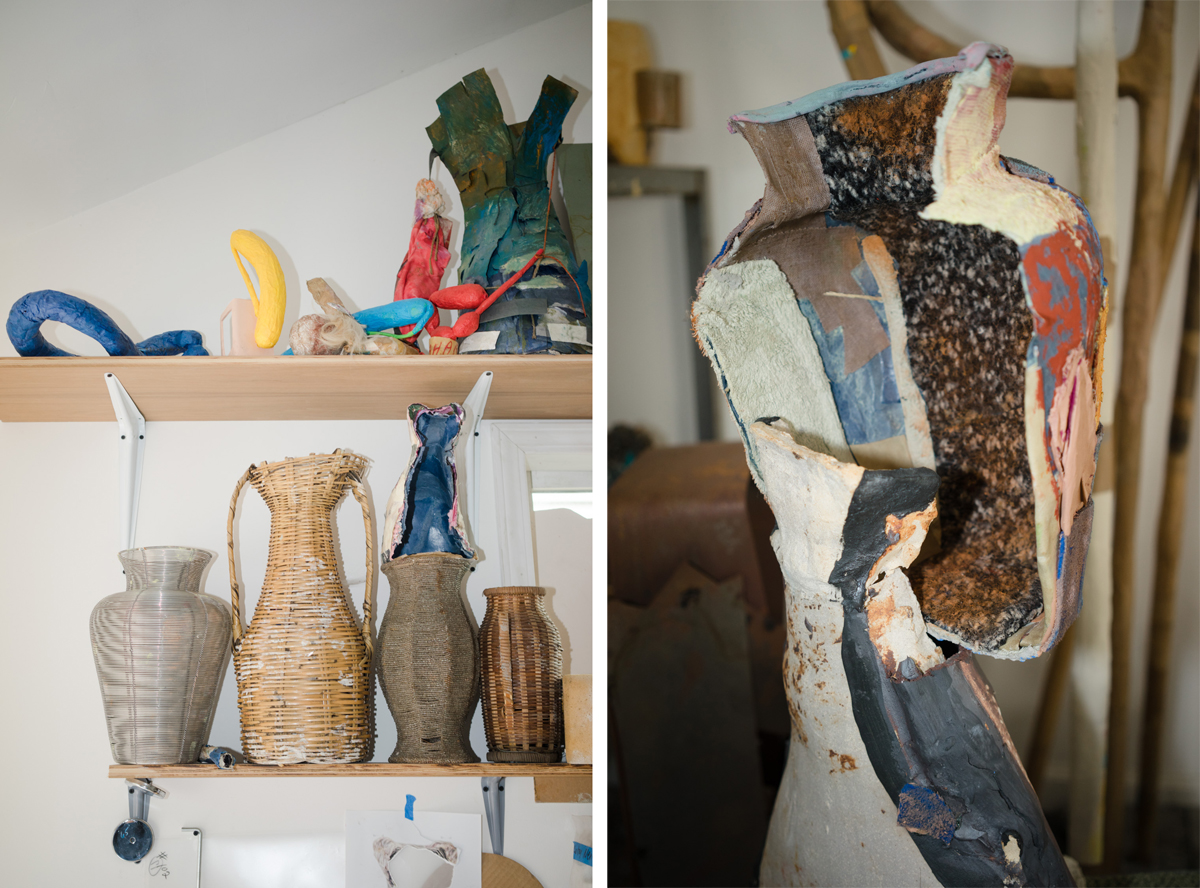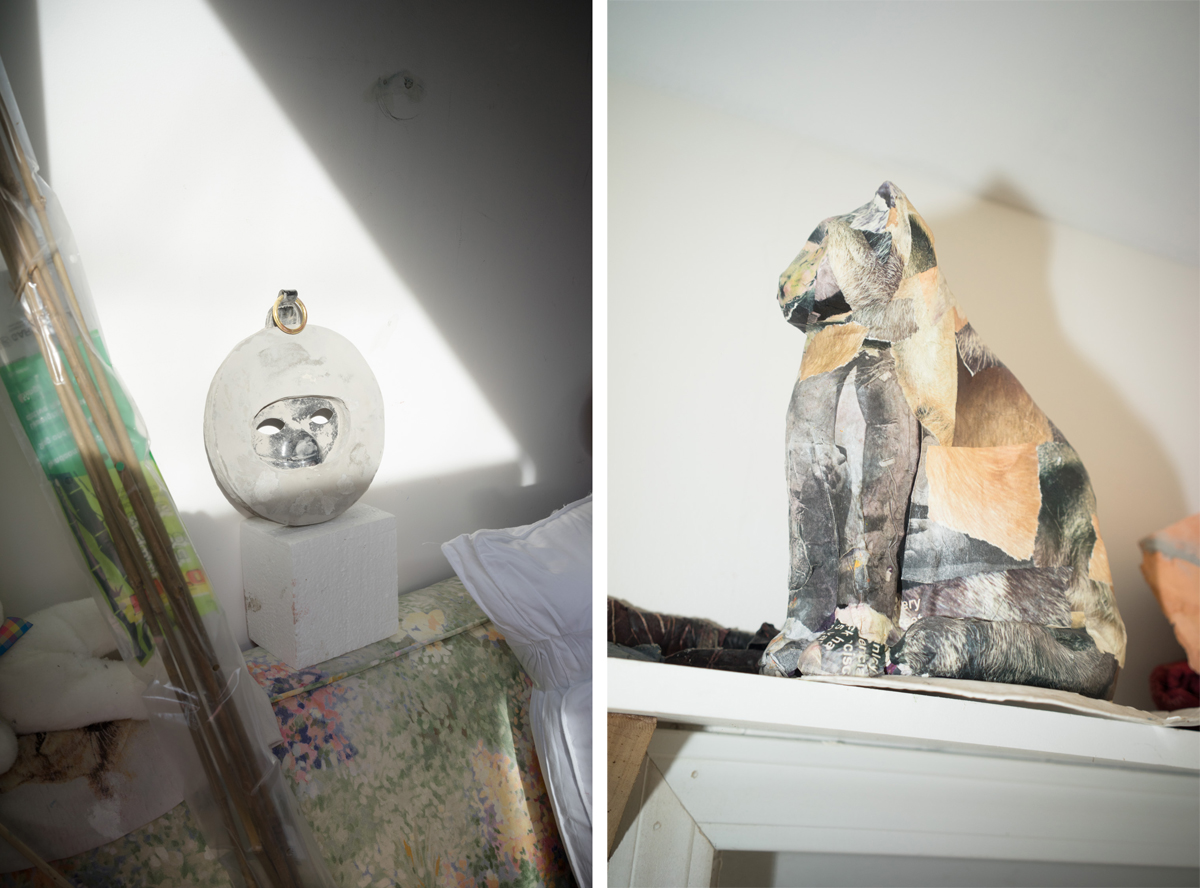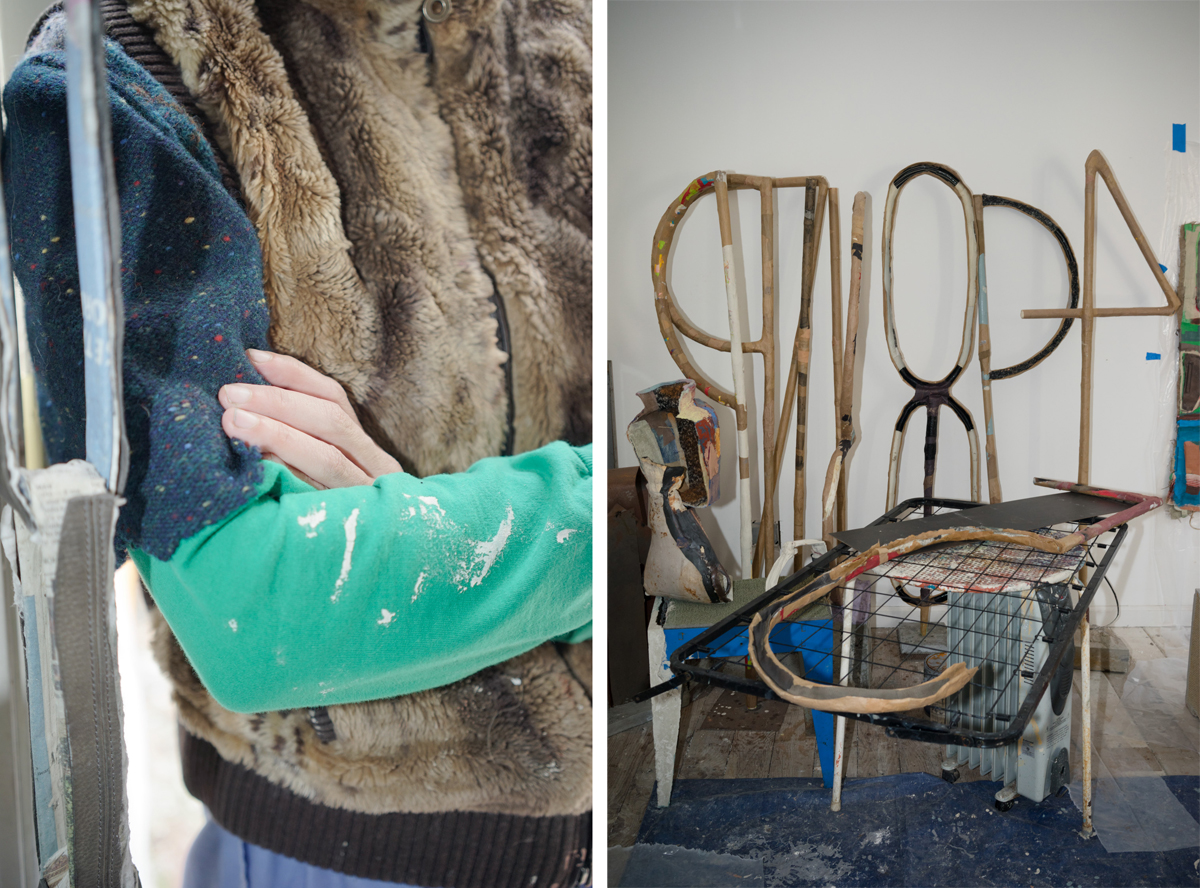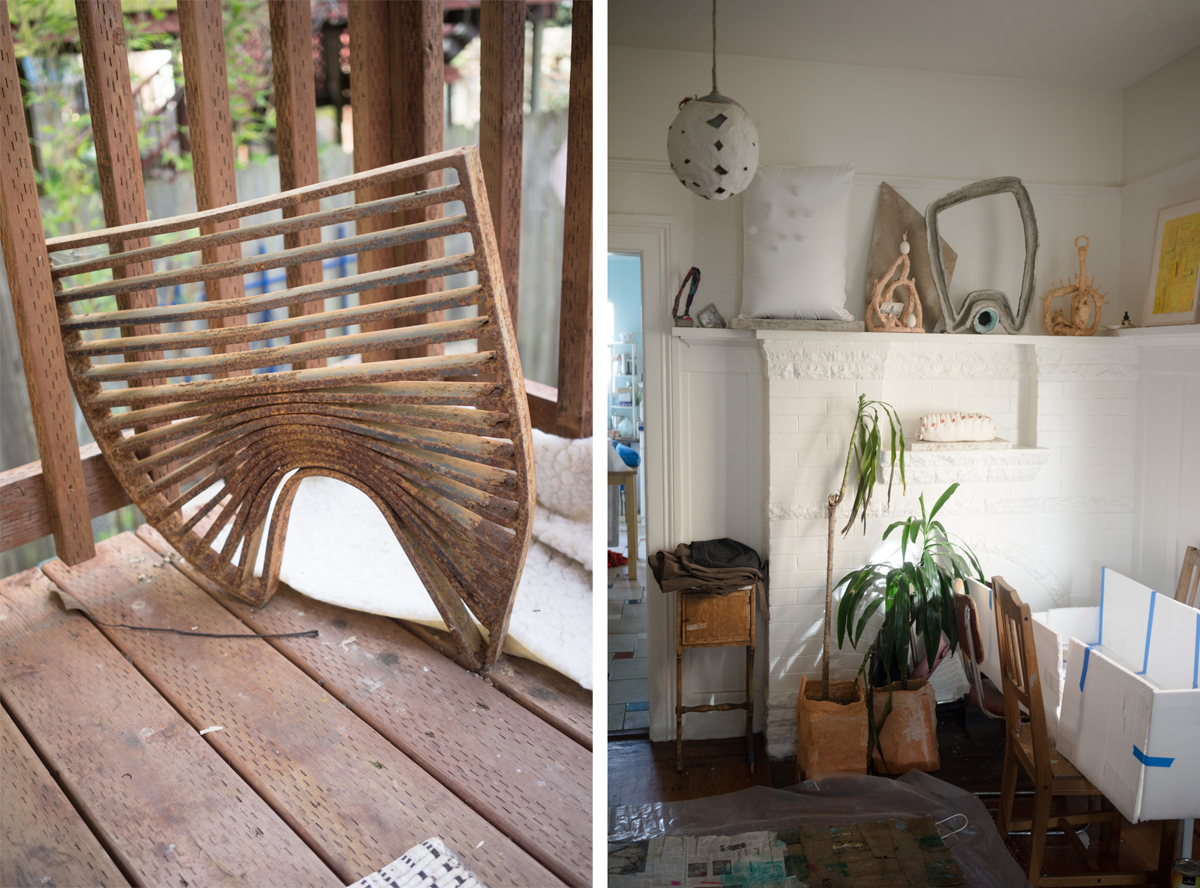Behind Sahar Khoury’s Oakland home, her studio is filled with works in progress for the sculptor’s upcoming solo show at the Luggage Store Gallery. With the opening just a few weeks away when we meet, Khoury’s working space is expanded beyond the 15-by-18-foot studio to include nearly every room of the home she shares with her partner, artist Alicia McCarthy.
And while any solo show would be cause for a focused period of intense making, this exhibition occupies a special place in Khoury’s personal trajectory as an artist. It was one of the first San Francisco galleries she would visit regularly, along with Jack Hanley Gallery and Gallery 16. “I feel like it’s a really neat full circle,” she says. “I’m really proud to show there; it’s a sentimental show in many ways.”
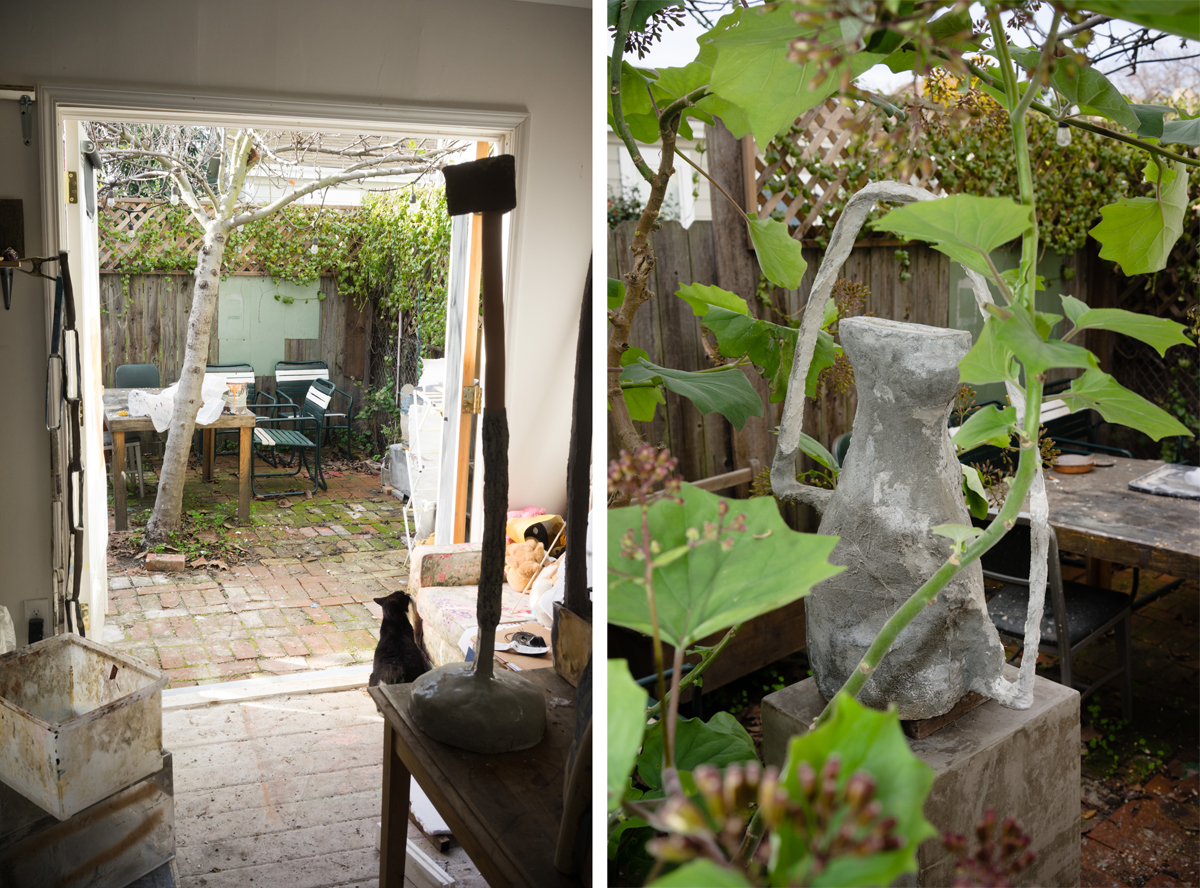
Khoury’s sculptural works — made with papier-mâché, concrete, ceramic and textiles — open in the Luggage Store’s third floor gallery on Feb. 18; a simultaneous solo exhibition by Oakland artist Anne Walsh will occupy the second floor. The two exhibitions share one title, THEY, a word Khoury says fits her need to understand what’s happened in the United States since the Nov. 8 election.
“I’m just trying to understand people’s fears rather than hate them for it.” Otherwise, she says, “I can get very very angry.”
Khoury studied anthropology in college, arriving at visual art through printmaking classes at the Mission Cultural Center for Latino Arts. Under Michael Roman’s tutelage, she began learning screen printing and monotype techniques. “I made these huge bed sheets,” she says, remembering her space-saving techniques in her first studio at 16th and Mission. “You could silkscreen this huge thing and then fold it up and put it away.”
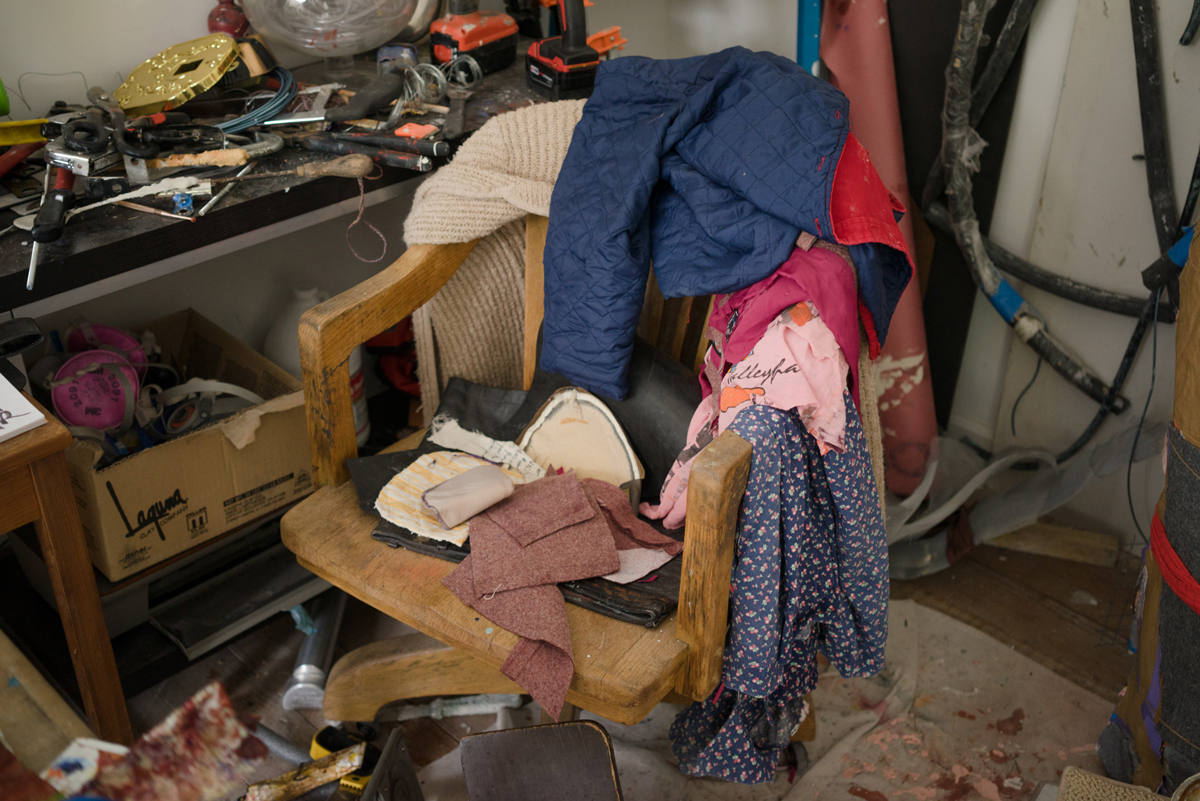
She looks around her current studio, where almost all the sculptures and wall reliefs contain clothing or other domestic textiles. “It’s funny,” she says, “as much as you think your art is changing, it’s not changing at all.”
